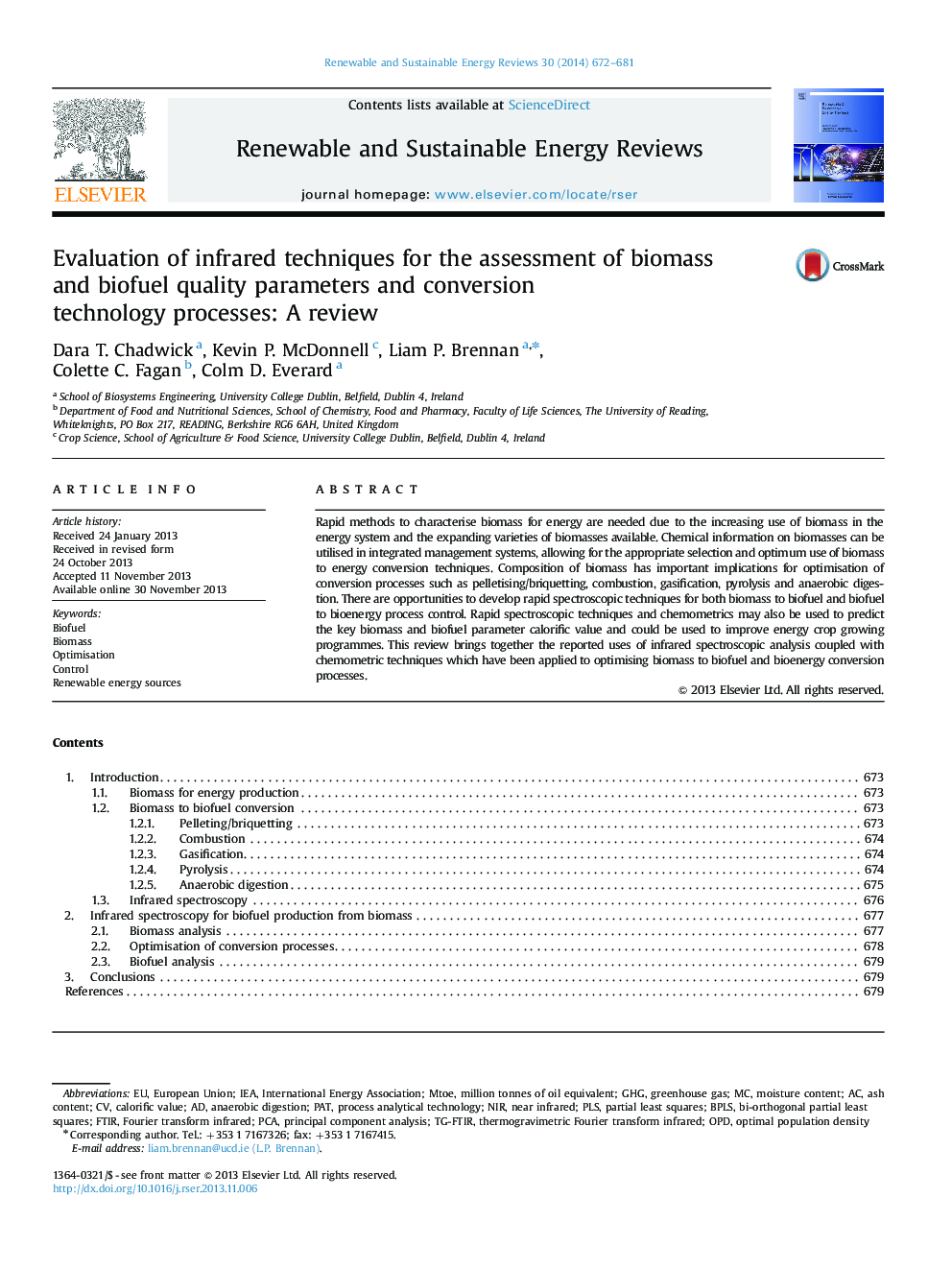| Article ID | Journal | Published Year | Pages | File Type |
|---|---|---|---|---|
| 8120649 | Renewable and Sustainable Energy Reviews | 2014 | 10 Pages |
Abstract
Rapid methods to characterise biomass for energy are needed due to the increasing use of biomass in the energy system and the expanding varieties of biomasses available. Chemical information on biomasses can be utilised in integrated management systems, allowing for the appropriate selection and optimum use of biomass to energy conversion techniques. Composition of biomass has important implications for optimisation of conversion processes such as pelletising/briquetting, combustion, gasification, pyrolysis and anaerobic digestion. There are opportunities to develop rapid spectroscopic techniques for both biomass to biofuel and biofuel to bioenergy process control. Rapid spectroscopic techniques and chemometrics may also be used to predict the key biomass and biofuel parameter calorific value and could be used to improve energy crop growing programmes. This review brings together the reported uses of infrared spectroscopic analysis coupled with chemometric techniques which have been applied to optimising biomass to biofuel and bioenergy conversion processes.
Keywords
MtoeIEATG-FTIRNIRGHGPLSPCAopdEuropean UnionOptimisationFourier transform infraredPrincipal component analysisProcess analytical technologyPartial least squaresBiomassBiofuelFTIRNear infraredash contentMoisture contentCalorific valueRenewable energy sourcesMillion tonnes of oil equivalentAnaerobic digestionpatControlGreenhouse gas
Related Topics
Physical Sciences and Engineering
Energy
Renewable Energy, Sustainability and the Environment
Authors
Dara T. Chadwick, Kevin P. McDonnell, Liam P. Brennan, Colette C. Fagan, Colm D. Everard,
